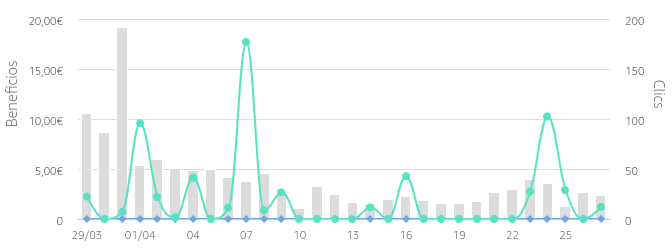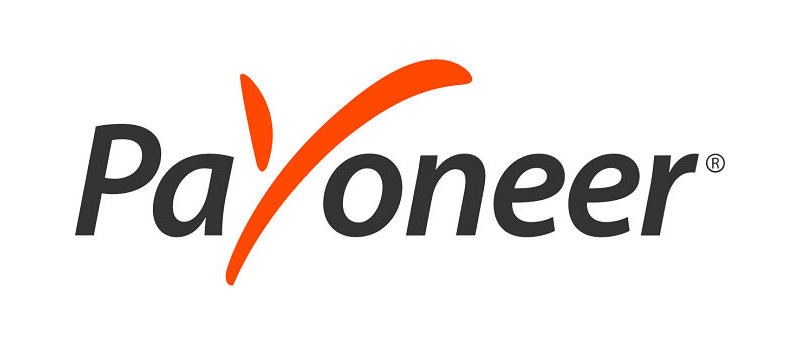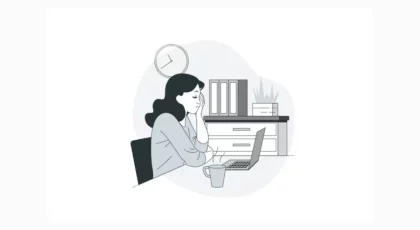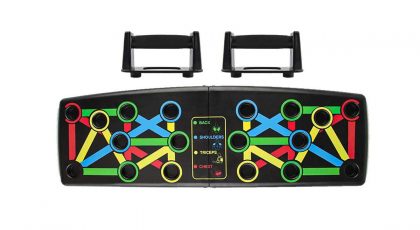In this article, I’m going to share my personal experience after several years of being part of Amazon’s affiliate program, known as Amazon Associates.
This is one of the top sources of passive income you can find, so I highly recommend investing some time into it.
This is going to be a long read, so take your time, or feel free to skip to the sections that interest you the most.
Heads up! I don’t want to waste your time, so here’s what you won’t find in this article:
- A step-by-step guide on how to sign up for Amazon Associates.
- Hacks to make more money. At some point, I’ll share two tips, but they’re not magic tricks or anything like that.
- A breakdown of numbers and statistics.
- A rant about how Amazon doesn’t pay me as much as I’d like.
This is a neutral article where I’ll share my experience—which, spoiler alert, has been positive so far.
Contenido
- 1 How Did I End Up with Amazon Associates?
- 2 How Does the Amazon Associates Sign-Up Process Work?
- 3 How Does the Amazon Associates Program Work?
- 4 What Are the Commission Rates?
- 5 What Link Publishing Tools Does Amazon Associates Offer?
- 6 How are Amazon Associates Reports?
- 7 What Happens If I Don’t Sell Anything?
- 8 How Does Amazon Pay?
- 9 Payoneer, a Solution for Receiving Payments
- 10 Any Tips for Maximizing the Amazon Affiliate Program?
- 11 Find more content about programming and the freelancer lifestyle
How Did I End Up with Amazon Associates?
After years of monetizing some of my sites with AdSense and not really getting much else out of them, one day, I decided to give Amazon’s affiliate program a shot.
To be honest, I already knew about it. It had always been there. I just didn’t think it was worth it for the kind of traffic my websites were getting, which I considered pretty low.
What changed my mind? One of those sketchy online tests that claim to tell you how much your website is worth based on who-knows-what variables. A few of them suggested I should be making more than twice what I was earning with AdSense alone. That got me thinking: I must be missing out on an opportunity here.
Why Amazon and not another program? Because it felt like the natural next step—first AdSense, then Amazon.
How Does the Amazon Associates Sign-Up Process Work?
My main goal with Amazon was to sell Kindle books, so I went straight to the U.S. Amazon site to sign up. But I couldn’t. To verify my account, they required me to enter a valid mobile phone number and wait for a call. That call never came.
At first, I thought I wouldn’t be able to use Amazon’s program at all, but then I discovered that there’s a separate affiliate program for every country where Amazon operates (USA, UK, Spain, Germany, etc.).
So, I decided to sign up for Amazon Spain’s affiliate program—without knowing whether it would work out or not.
And in case you’re wondering, a year later, I finally managed to register for the U.S. affiliate program, but only by using a phone number from another country.
Signing up for Amazon Spain was pretty straightforward. You just fill out a few forms about your website, the type of content you create, how you plan to promote it, and that’s about it.
I don’t remember if Amazon Spain required approval, but I think it did. For the U.S. program, though, you definitely have to wait for them to accept you.
How Does the Amazon Associates Program Work?
At a high level, Amazon’s affiliate program is pretty simple to understand.
Amazon lets you browse its entire store, and when you find something you think you can promote, you generate a special link. You place that link on your website, and if someone clicks on it, goes to Amazon, and makes a purchase, you earn a commission on what they bought.
There are two types of purchases a user can make on Amazon:
- Direct qualified purchases happen when you link to a specific product, and the user buys that exact item or something within the same category. In this case, you get the full commission.
- Indirect qualified purchases happen when the user lands on a specific product page but ends up buying something completely different. The same applies if they land on a category page. In these cases, the commission is significantly lower—just 1.5%, which is ridiculously low. This changed the game for Amazon affiliates.
One thing that remains the same is that if the user you referred buys multiple items in one purchase, those products also count as referrals, and you earn a commission on them—following the same direct and indirect purchase structure.
To track where visitors are coming from, Amazon uses cookies. So, even if a user clicks your link and closes the window, if they return and complete their purchase within 24 hours, you still get the commission.
But here’s one of the downsides: the cookie only lasts 24 hours. That means once the user clicks your link, you have a very short window to get that commission.
However, if the user adds the product to their cart, the cookie window extends to 90 days, as long as they complete the purchase within that time—even if they close the browser and come back later.
If you’ve used other affiliate programs, you probably know that some offer cookie durations of up to a month. Compared to that, Amazon’s window is pretty short.
On top of that, Amazon also has some alternative commission programs based on CPA (Cost Per Action) or CPL (Cost Per Lead). This means you can earn commissions when someone signs up for services like Amazon Music, Amazon Prime, or Kindle Unlimited through your link.
What I’ve shared here is just a general overview. If you want to fully understand how the Amazon Associates program works, you need to read the Operating Agreement.
What Are the Commission Rates?
Amazon Associates has a commission table based on the category of the product the user purchases. Keep in mind that the percentages vary by country.
Currently, in Spain, commission rates range from 1.5% to 12%. That 12% is only reached in the clothing and accessories category if you sell more than €2,500 per month. If you sell less, the commission drops to 11%.
For Amazon service subscriptions, commissions are usually fixed. As of the time of writing, Amazon pays:
- €1 per subscriber, referred to Amazon Prime
- €3 per subscriber referred to Amazon Music Unlimited, Kindle Unlimited, and Amazon Prime Video
These services offer a 30-day free trial, and you still get paid the commission even if the user cancels after the trial ends.
What Link Publishing Tools Does Amazon Associates Offer?
In the Amazon Associates admin panel, you can generate different types of links to include on your website.
Currently, in Amazon Spain, there are four main native options:
- Link Generator – A super basic tool that allows you to generate a shortened affiliate link for any Amazon product you want to promote.
- Product Promotion Boxes – A tool that displays the product name and image. The downside? It’s not responsive and looks absolutely terrible. In my experience, it doesn’t work well at all—it looks messy and lowers the quality of your website.
- Banners – Amazon provides image-based banners that are visually well-designed. Some promote specific products, while others showcase entire categories or services, like Amazon Prime and Amazon Music. They look good on most sites, but they don’t have a responsive version, which makes them less effective.
- API – Amazon’s API is available for use, but it’s best to leverage it through plugins for different CMS platforms. The only catch? There’s a daily limit on the number of requests you can make. This limit increases or decreases based on your sales volume.
Each of these links can be configured with a unique tracking code, allowing you to monitor different income sources and marketing channels.
How are Amazon Associates Reports?

Amazon provides an entire reporting panel, but in my opinion, it falls a bit short. There are graphs and tracking tools, but I still need to use external spreadsheets to get the insights I really need.
Unlike other programs like Google AdSense, reports are not updated in real time. This can be a bit annoying, but at the same time, it helps reduce anxiety—I simply check the stats at night, based on European time, to see how the day performed.
The basic report categorizes clicks on Amazon links based on where the click was made (not which page, but the type of link, such as API or manually generated links). It also includes the number of items ordered and earnings.
It’s pretty common to see that, on a given day, there were three items ordered but no commissions yet. That’s because commissions are credited a few days later.
The reports include graphs and general statistics, allowing you to analyze:
- Performance by link type
- Grouping by product category, date, and tracking code
- Important metrics like conversion rate
You can export reports in XLS, CSV, and XML formats. Some of the available reports include:
- Orders report
- Summary by tracking code
- Earnings report
- Daily trends
- Performance by link type
Of course, all these reports can be filtered by date range, giving you full control over the data you analyze.
What Happens If I Don’t Sell Anything?
From what I’ve read on some websites, Amazon may deactivate your affiliate account if you don’t make any sales within the first 90 days. Since this hasn’t happened to me, I can’t confirm it for sure, but it does make sense.
In this case, the best approach is to build a website, invest time in it, and wait for it to grow. Once it reaches a good level of traffic and is monetized through other channels, such as AdSense, it will be ready to start selling through Amazon Associates.
How Does Amazon Pay?
Amazon Spain offers three payment methods for your commissions, paid monthly:
- Check – This is a physical check you can cash. As far as I know, Amazon sends checks worldwide, but in Latin America, they cannot be cashed. If you’re reading this and have successfully cashed an Amazon check from a Latin American country, please let me know!
- Gift Cards – Amazon can also pay you with store credit, allowing you to shop directly on Amazon. This means no actual money transactions—your earnings are simply added as a credit you can use on Amazon.
- Bank Transfer – Amazon can send a wire transfer to any bank worldwide. This might seem like the best option, but banks charge high fees for international transfers. If your monthly earnings are low (which is likely when starting out), the fees might not make it worth it.
Payoneer, a Solution for Receiving Payments

To solve the last issue, I recommend Payoneer, which is a platform used by both businesses and freelancers to receive payments from abroad. Registration is completely free.
Payoneer allows you to receive payments in banks from different parts of the world, and it will credit the funds to your personal account. You can then transfer the money to your bank, but instead of paying you from another country, Payoneer pays you from your own. Of course, they take a small commission, but it’s minimal compared to the fees charged by banks.
Additionally, if you don’t want to receive your payments via transfer, you can request a prepaid MasterCard from Payoneer (they send it to you for free) and use it to make purchases with your accumulated funds. The card is international, and you can use it anywhere in the world.
Any Tips for Maximizing the Amazon Affiliate Program?
Of course, there are many obvious tips, such as creating good content and not trying to force what you sell. You can find these tips all over the web.
Here are two tips that helped me a lot:
Work on the CTAs
I come from the programming world, and digital marketing was a new universe for me. I didn’t pay much attention to Call To Action buttons until I discovered that they really work.
Optimizing a simple button can make a difference. It’s important to research and test.
Install the AAWP Plugin

AAWP is a WordPress plugin.
A few years ago, I was getting 4 or 5 clicks per day on links to Amazon until I decided to buy the AAWP plugin. From then on, I never got fewer than 20 clicks, and I’ve had spikes of over 100 clicks per day. My commissions skyrocketed, and I started selling all kinds of products almost every day.
The magic of this plugin is truly incredible. Its task is simple but important: it generates responsive boxes with the product, an image, a brief description, the price, and an attractive CTA.

This is the type of responsive box that AAWP creates. You just need to tell it which product to promote, and it generates the entire structure automatically.
Additionally, it’s highly customizable. It works with AMP pages and, if necessary, redirects users to the various Amazon stores depending on the user’s location. You can change the CTA color and modify the look however you like.
It’s responsive and offers various ways to display products: boxes, lists, comparisons, and more. Since it uses the Amazon API, you can create bestseller lists, bring in products by category, and much more.
In short: it works amazingly well.
Unfortunately, I had to stop using it.
On one hand, the plugin’s price increased dramatically. On the other hand, Amazon became more restrictive with API calls, so I reached the limit of calls available, preventing AAWP from updating the product boxes.
I’m not sure if it was a plugin failure or what happened, but this issue led to the product boxes not being displayed, leaving me with zero earnings per day.
Does Amazon Associates have geolocation?
In the U.S. affiliate program, you can make a kind of union between the different programs you’re registered with, allowing you to manage them all at once. Kind of like the One Ring from The Lord of the Rings.
Amazon offers you One Link, which is a link generator that, based on the user’s location, sends them to the Amazon store that’s closest to them.
In that sense, it’s similar to what AAWP does, but without needing plugins. So far, I’ve only seen this option in the U.S. affiliate program.
How is Amazon Associates on a daily basis?
In this section, I want to share some general comments related to daily use.
When it comes to creating content and generating links, having AAWP made my life easier because I would enter a code and forget about the problem. Now, I use Gutenberg patterns and insert product boxes that I create with GeneratePress, a plugin to create custom HTML blocks.
However, I also sometimes use Amazon’s manual links, and the process is a bit longer, less glamorous, but still just as simple.
Within my monetization channels, Amazon doesn’t bring in money every day. In general, the commissions are small. This might be linked to the type of websites I currently have.
The good thing is that every once in a while, there’s a high commission that exceeds 15€, and that’s when things get interesting.
From time to time, there are also cancellations, which result in money being deducted, but this isn’t very common.
I tried creating a site just to promote products through Amazon Associates, but it didn’t work as I expected. The need for good content is always present. It’s not like you create a website with two or three reviews, and people just come in and buy. It’s much harder than that.
In summary
Well, up until now, I’ve shared my experience after several years of using Amazon Associates. I believe that with more time and effort, this could be a more than interesting passive income channel.
And I can assure you that, beyond the money, if you join this affiliate program, you will learn a lot.
Find more content about programming and the freelancer lifestyle
I hope you found this article interesting.
If you’re looking for hosting, I recommend Digital Ocean. Follow this link to get $200 in credit to use over a 60-day period.
I invite you to follow me on social media: YouTube, LinkedIn, X, GitHub, and Instagram. I’m also on CodeWars.
That’s all. Thank you very much for taking the time to read.
See you next time!


